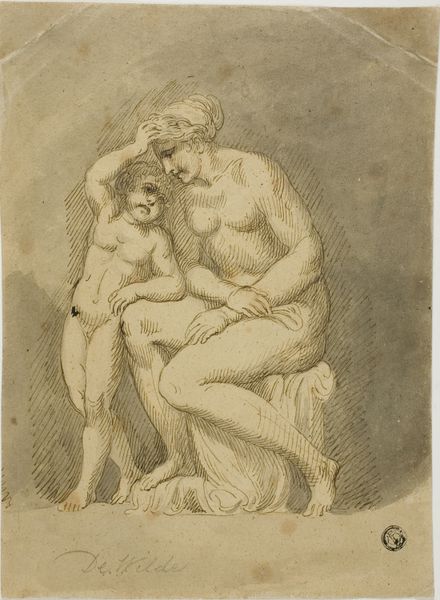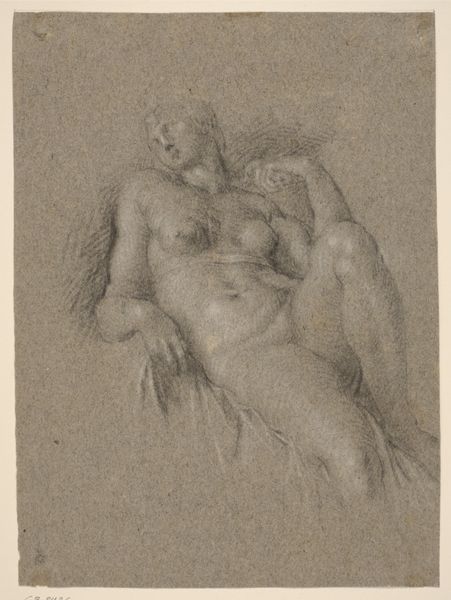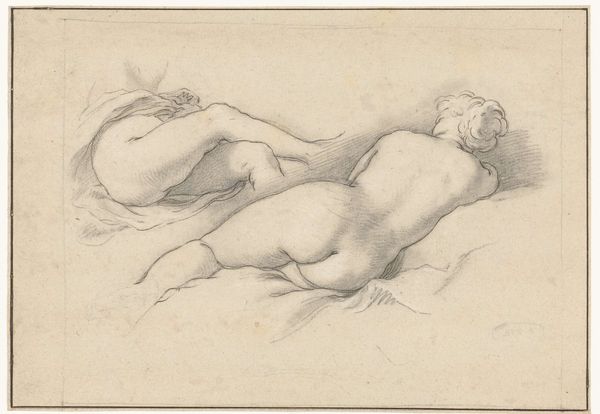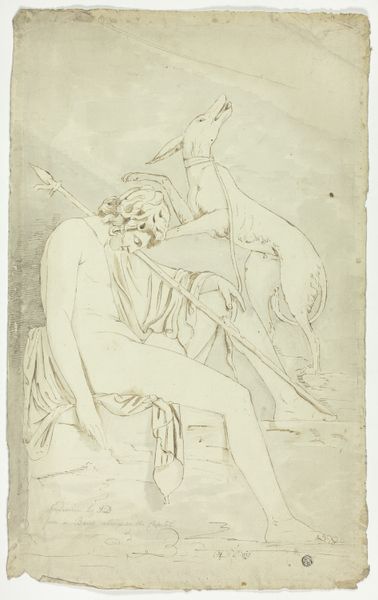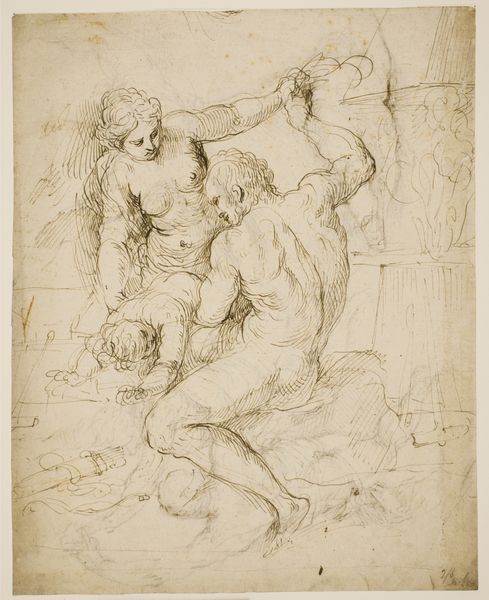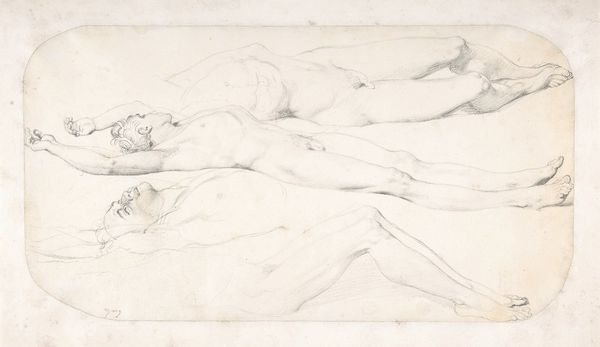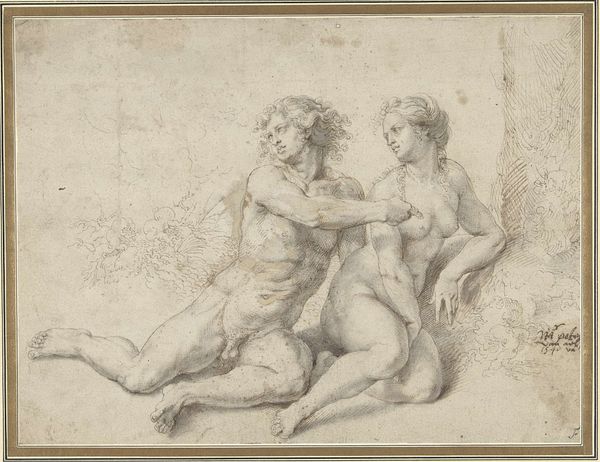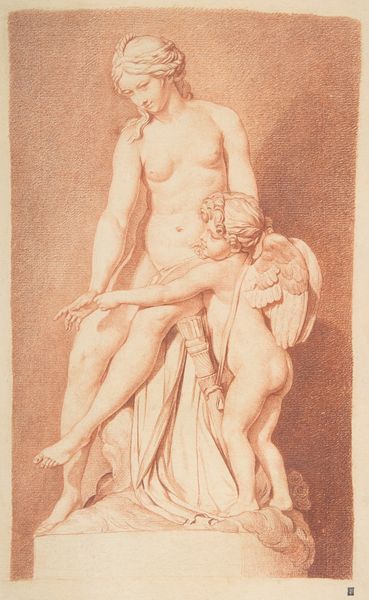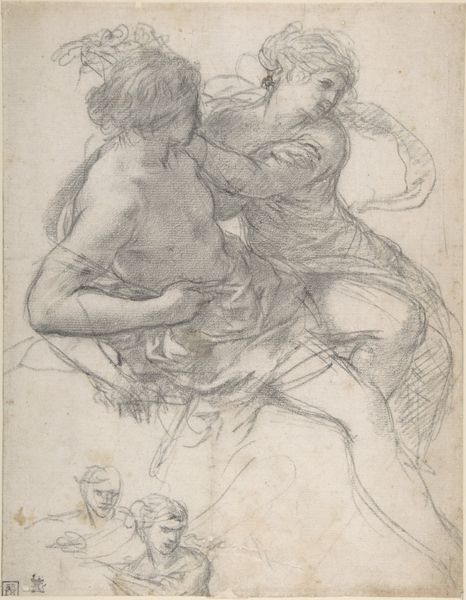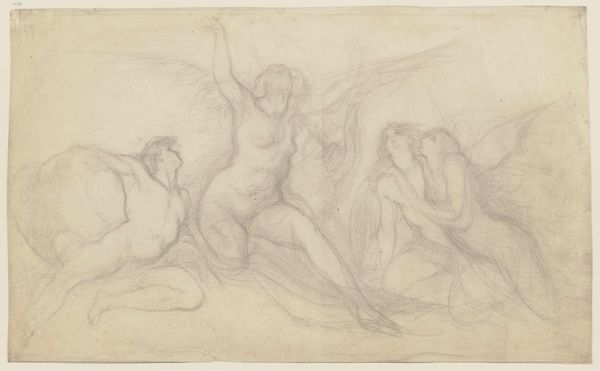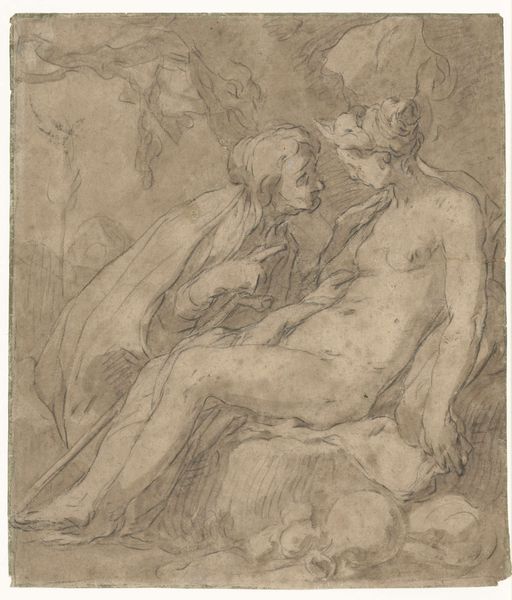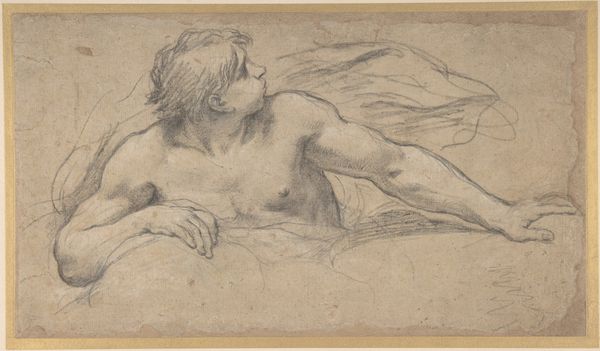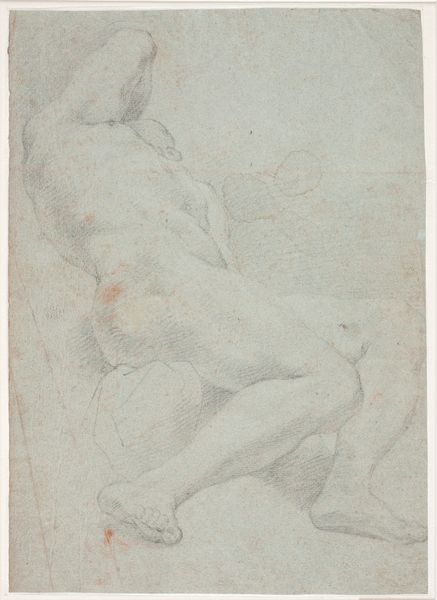
drawing, print, paper, pencil, chalk
#
portrait
#
drawing
#
self-portrait
# print
#
pencil sketch
#
figuration
#
paper
#
pencil drawing
#
england
#
pencil
#
chalk
#
genre-painting
#
history-painting
#
academic-art
#
nude
Dimensions: 201 × 261 mm
Copyright: Public Domain
Curator: This is "Seated Male Near Female," a chalk and pencil drawing on paper created around the 18th century. It’s part of the Art Institute of Chicago’s collection. Editor: My first impression? Delicate. Almost ethereal. The soft pencil strokes give the figures a weightless quality. It's very neoclassical in spirit. Curator: Agreed. Looking at the process, the layered chalk and pencil work show a real dedication to achieving precise anatomical accuracy, something very valued at that time, rooted in classical ideals revived during the Renaissance and enduring through the Enlightenment. This involved rigorous life drawing. Editor: Precisely. This wasn't simply about depicting bodies, it was about projecting very specific societal ideals onto them. The male and female figures, seemingly nude, represent an academic understanding of the human form…almost as though these bodies exist divorced from lived experiences or imperfections. It reinforces certain dominant cultural norms of the time, particularly ideas of beauty and idealized representation. Curator: Consider also the economic reality: the materials available – paper, chalk, pencils – all would have had associated costs, therefore impacting the accessibility to the means of production, a constraint felt most keenly by working class artists. So who *was* producing these images, for whom, and what conditions were *they* working under? Editor: Excellent questions. The accessibility of art education was also stratified. These techniques and this style were predominantly taught and circulated amongst privileged artists who upheld conservative and heteronormative representations, so the image ends up circulating, not simply as an aesthetic, but also reasserting particular values. It leaves you thinking about all the excluded perspectives in the art of that era, particularly from women artists. Curator: The interplay of labor, skill and societal expectations really do inform the drawing, doesn’t it? Editor: Absolutely. By dissecting how representations like this are created and consumed, we see not just art, but the ideologies they perpetuate and conceal. Curator: A perfect insight into the making and *unmaking* of meanings around images like this! Editor: Exactly. Let's remember art has the power to shape our understanding of the world, and in turn, to actively reshape our role within it.
Comments
No comments
Be the first to comment and join the conversation on the ultimate creative platform.

